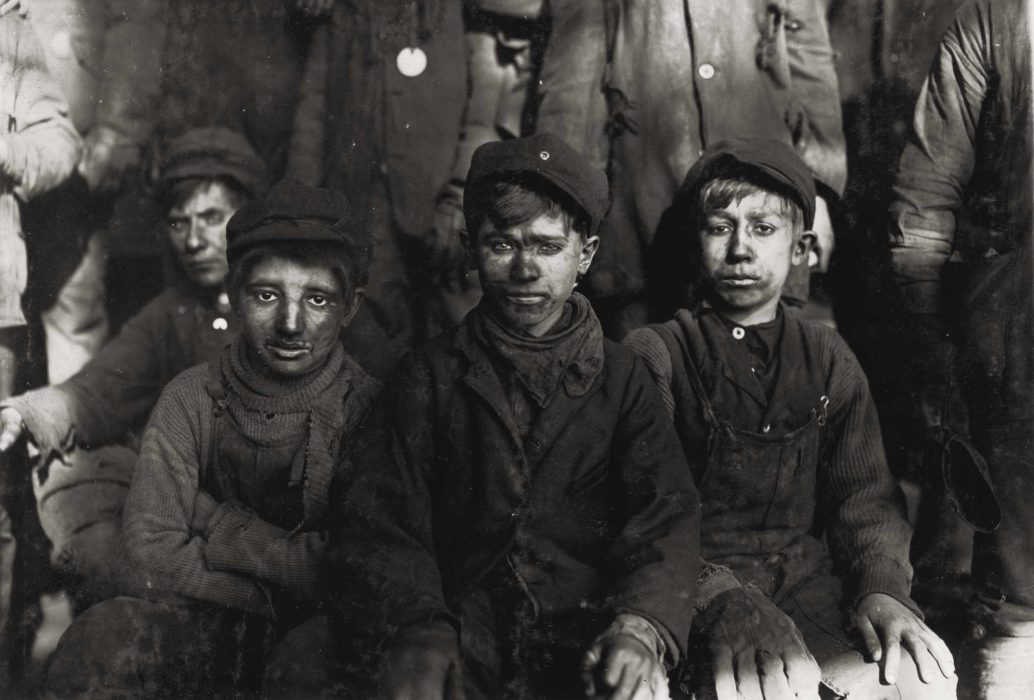“JESUS CHRIST GAVE HIS life upon the cross for the unity of mankind,” ‘Abdu’l-Bahá stated on his second day in America. Most Christians might argue otherwise: Jesus gave his life for the forgiveness of sins, an act of atonement that assures our personal salvation. By placing an emphasis on social redemption over individual redemption, ‘Abdu’l-Bahá strayed from a millennium of church doctrine.
Yet to his audience in Brooklyn that day, it was something of a rallying cry, a validation of their spiritual direction. Many who flocked to ‘Abdu’l-Bahá’s talks in cities such as New York and Chicago were aligned with an influential new Protestant movement. They had made the leap – a reorientation in their interpretation of the Gospel, focused on the regeneration of the social order.
Late nineteenth century America was in the throes a major shift. The mass exodus from the countryside to the city had reached critical mass. Cities in the north burst at the seams with the success of industrialization, but also felt its dark side. Tightly knit agricultural communities gave way to fragmented urban settings. In the city the church, the center of gravity in rural life, was often pushed aside.
Big-city Protestants, alarmed at the poverty, injustice, and suffering they witnessed, looked for a Christian response. But traditional theology just didn’t seem up to the task. They responded with the “Social Gospel.”
“The individualistic gospel has taught us to see the sinfulness of every human heart,” wrote Walter Rauschenbusch, a Baptist pastor serving in Hell’s Kitchen in Manhattan. “But it has not given us an adequate understanding of the sinfulness of the social order and its share in the sins of all individuals within it.”

Rauschenbusch articulated a theological foundation for the new movement. He didn’t believe that Jesus, by dying, substituted his life for our sins. He understood that Christ died on the cross “to substitute love for selfishness as the basis of human society.”
The Social Gospel sought to establish, literally, Jesus’s promise in the Lord’s Prayer: “Thy kingdom come, Thy will be done on earth as it is in heaven.” It was not simply about getting souls into heaven, but about transforming life to reflect heaven here on Earth. It meant solving social problems such as income disparity, child labor, poor schooling, and a host of other injustices.
Rauschenbusch set much of the blame for social ills at the feet of religion. He observed how the “Church” had gradually replaced Christ’s “Kingdom.” It was a theme ‘Abdu’l-Bahá would return to often: over time, rituals, dogmas, and superstitions had created a man-made “imitation” of religion. For ‘Abdu’l-Bahá, building the Kingdom meant building a just and unified global society.
On ‘Abdu’l-Bahá’s eighth day in America, he visited the homeless at the Bowery Mission. “We must be the servants of the poor,” he said, “helpers of the poor, remember the sorrows of the poor, associate with them; for thereby we may inherit the Kingdom of heaven.” That Sunday he had picked the Rev. Percy Stickney Grant’s Church of the Ascension for his first American public address, a leading Social Gospel center in New York.

In Washington, he was unequivocal in his condemnation of the social conventions of race, a crucial issue for the Social Gospelers. In Chicago he laid the cornerstone for a unique religious institution – the Bahá’í House of Worship – that offered a new model of faith dedicated to the service of humankind. Then he had turned his attention to the cause of international peace, another vital component of the Social Gospel, addressing the International Peace Forum, the New York Peace Society, and the Lake Mohonk Conference on International Arbitration.
It was no wonder the Social Gospelers felt attracted to him.
Now, just over a month after his arrival in America, ‘Abdu’l-Bahá was preparing to speak at another unique institution inspired by the movement: the Brotherhood Church of Reverend Howard Colby Ives.






